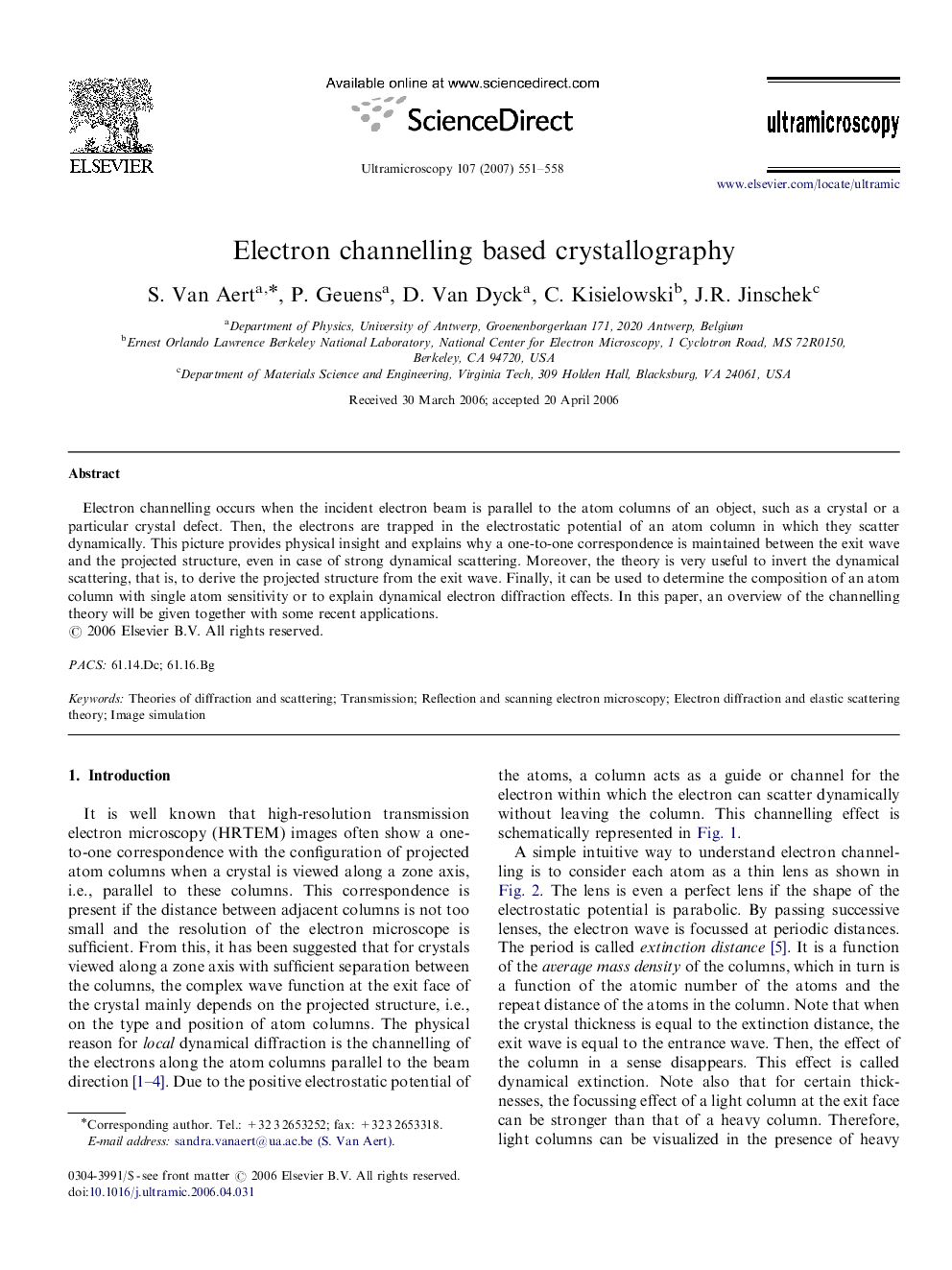| Article ID | Journal | Published Year | Pages | File Type |
|---|---|---|---|---|
| 1679111 | Ultramicroscopy | 2007 | 8 Pages |
Electron channelling occurs when the incident electron beam is parallel to the atom columns of an object, such as a crystal or a particular crystal defect. Then, the electrons are trapped in the electrostatic potential of an atom column in which they scatter dynamically. This picture provides physical insight and explains why a one-to-one correspondence is maintained between the exit wave and the projected structure, even in case of strong dynamical scattering. Moreover, the theory is very useful to invert the dynamical scattering, that is, to derive the projected structure from the exit wave. Finally, it can be used to determine the composition of an atom column with single atom sensitivity or to explain dynamical electron diffraction effects. In this paper, an overview of the channelling theory will be given together with some recent applications.
